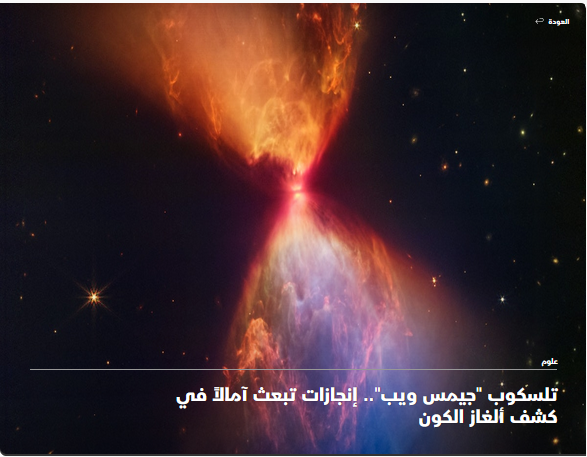The James Webb Telescope... Achievements that raise hopes for revealing the mysteries of the universe

An image of the "protostar" inside a dark cloud taken by infrared rays via the "James Webb" telescope, September 29, 2022 - AFP
The James Webb telescope, since its launch last summer to explore the beginnings of the universe and the atmosphere of distant planets, has printed the year 2022 with exceptional images that raise hopes for major discoveries in the coming years.
"James Webb is doing better than expected in every way," said Space Telescope Science Institute mission chief Massimo Steavelli, who oversees the observatory's work.
He added, "The general public benefits from the advantages of this innovation, thanks to the colors that print telescope images that are usually invisible to the naked eye."
Since it was placed one and a half million kilometers from Earth, the successor to the Hubble Space Telescope, which is also still in service, astonishes astronomers, with images of unprecedented accuracy.
In addition, the accuracy of its launch allows it to continue working for a period of no less than 20 years, after the guaranteed life expectancy was 10 years.
And unlike the Hubble telescope, which observes the universe mainly in the visible spectrum (which the human eye can detect), James Webb is able to "see" in infrared, which is radiation that all objects naturally emit.
At this longitudinal wave, the James Webb telescope can detect the weakest flashes in deep space, penetrate the dust barrier that obscures stars in a constellation, or analyze the atmospheres of exoplanets thanks to its spectrometers.

James Webb telescope captures unprecedented images of the Orion Nebula
International researchers have published unprecedented images of the "Orion Nebula" taken by the "James Webb" telescope, and intend to study them in order to reach an understanding of the conditions that prevailed when the solar system was formed.
Source: websites

